- ▶
- Heaters/Source
- ▶
- Agilent Heaters and SensorsMass Spectrometry, Scientific Supplies & ManufacturingScientific Instrument Services 5973 Source Heater Tamper Resistant Allen Wrench 5973/5975 Quad Sensor 5985 Source Heater Assembly Agilent Interface Heater Assembly 5971 Interface Heater

- ▶
- Probes
- LiteratureApplication Notes Adsorbent Resins Guide Mass Spec Tips SDS Sheets FAQ MS Calibration Compound Spectra Manuals MS Links/Labs/ Organizations MS Online Tools Flyers on Products/Services Scientific Supplies Catalog About Us NextAdvance Bullet Blender® Homogenizer Protocols Micro-Mesh® Literature Instrumentation Literature Agilent GC/MS Literature SIS News / E-Mail Newsletter NIST MS Database - Update Notifications

- ▶
- Application NotesNote 103: EPA Method 325B, Novel Thermal Desorption Instrument Modification to Improve Sensitivity Note 102: Identification of Contaminants in Powdered Beverages by Direct Extraction Thermal Desorption GC/MS Note 101: Identification of Contaminants in Powdered Foods by Direct Extraction Thermal Desorption GC/MS Note 100: Volatile and Semi-Volatile Profile Comparison of Whole Versus Cracked Versus Dry Homogenized Barley Grains by Direct Thermal Extraction Note 99: Volatile and Semi-Volatile Profile Comparison of Whole vs. Dry Homogenized Wheat, Rye and Barley Grains by Direct Thermal Extraction GC/MS Note 98: Flavor and Aroma Profiles of Truffle Oils by Thermal Desorption GC/MS Note 97: Flavor Profiles of Imported and Domestic Beers by Purge & Trap Thermal Desorption GC/MS Note 96: Reducing Warping in Mass Spectrometer Filaments, with SISAlloy® Yttria/Rhenium Filaments Note 95: Detection of Explosives on Clothing Material by Direct and AirSampling Thermal Desorption GC/MS Note 94: Detection of Nepetalactone in the Nepeta Cataria Plant by Thermal Desorption GC/MS Note 93: Detection of Benzene in Carbonated Beverages with Purge & Trap Thermal Desorption GC/MS Note 92: Yttria Coated Mass Spectrometer Filaments Note 91: AutoProbe DEP Probe Tip Temperatures Note 90: An Automated MS Direct Probe for use in an Open Access Environment Note 89: Quantitation of Organics via a Mass Spectrometer Automated Direct Probe Note 88: Analysis of Silicone Contaminants on Electronic Components by Thermal Desorption GC-MS Note 87: Design and Development of an Automated Direct Probe for a Mass Spectrometer Note 86: Simulation of a Unique Cylindrical Quadrupole Mass Analyzer Using SIMION 7.0. Note 85: Replacing an Electron Multiplier in the Agilent (HP) 5973 MSD Note 84: Vacuum Pump Exhaust Filters - Charcoal Exhaust Traps Note 83: Vacuum Pump Exhaust Filters - Oil Mist Eliminators Note 82: Vacuum Pump Exhaust Filters Note 81: Rapid Bacterial Chemotaxonomy By DirectProbe/MSD Note 80: Design, Development and Testing of a Microprocessor ControlledAutomated Short Path Thermal Desorption Apparatus Note 79: Volatile Organic Compounds From Electron Beam Cured and Partially Electron Beam Cured Packaging Using Automated Short Path Thermal Desorption Note 78: A New Solution to Eliminate MS Down-Time With No-Tool-Changing of Analytical GC Columns Note 77: The Determination of Volatile Organic Compounds in VacuumSystem Components Note 76: Determination of the Sensitivity of a CRIMS System Note 75: An Apparatus for Sampling Volatile Organics From LivePlant Material Using Short Path Thermal Desorption Note 74: Examination of Source Design in Electrospray-TOF Using SIMION 3D Note 73: The Analysis of Perfumes and their Effect on Indoor Air Pollution Note 72: 1998 Version of the NIST/EPA/NIH Mass Spectral Library, NIST98 Note 71: Flavor Profile Determination of Rice Samples Using Shor tPath Thermal Desorption GC Methods Note 70: Application of SIMION 6.0 To a Study of the Finkelstein Ion Source: Part II Note 69: Application of SIMION 6.0 To a Study of the Finkelstein Ion Source: Part 1 Note 68: Use of a PC Plug-In UV-Vis Spectrometer To Monitor the Plasma Conditions In GC-CRIMS Note 67: Using Chemical Reaction Interface Mass Spectrometry (CRIMS) To Monitor Bacterial Transport In In Situ Bioremediation Note 66: Probe Tip Design For the Optimization of Direct Insertion Probe Performance Note 65: Determination of Ethylene by Adsorbent Trapping and Thermal Desorption - Gas Chromatography Note 64: Comparison of Various GC/MS Techniques For the Analysis of Black Pepper (Piper Nigrum) Note 63: Determination of Volatile and Semi-Volatile Organics in Printer Toners Using Thermal Desorption GC Techniques Note 62: Analysis of Polymer Samples Using a Direct Insertion Probe and EI Ionization Note 61: Analysis of Sugars Via a New DEP Probe Tip For Use With theDirect Probe On the HP5973 MSD Note 60: Programmable Temperature Ramping of Samples Analyzed ViaDirect Thermal Extraction GC/MS Note 59: Computer Modeling of a TOF Reflectron With Gridless Reflector Using SIMION 3D Note 58: Direct Probe Analysis and Identification of Multicomponent Pharmaceutical Samples via Electron Impact MS Note 57: Aroma Profiles of Lavandula species Note 56: Mass Spec Maintenance & Cleaning Utilizing Micro-Mesh® Abrasive Sheets Note 55: Seasonal Variation in Flower Volatiles Note 54: Identification of Volatile Organic Compounds in Office Products Note 53: SIMION 3D v6.0 Ion Optics Simulation Software Note 52: Computer Modeling of Ion Optics in Time-of-Flight mass Spectrometry Using SIMION 3D Note 51: Development and Characterization of a New Chemical Reaction Interface for the Detection of Nonradioisotopically Labeled Analytes Using Mass Spectrometry (CRIMS) Note 50: The Analysis of Multiple Component Drug Samples Using a Direct Probe Interfaced to the HP 5973 MSD Note 49: Analysis of Cocaine Utilizing a New Direct Insertion Probe on a Hewlett Packard 5973 MSD Note 48: Demonstration of Sensitivity Levels For the Detection of Caffeine Using a New Direct Probe and Inlet for the HP 5973 MSD Note 47: The Application Of SIMION 6.0 To Problems In Time-of-Flight Mass Spectrometry Note 46: Delayed Extraction and Laser Desorption: Time-lag Focusing and Beyond Note 45: Application of SIMION 6.0 to Filament Design for Mass Spectrometer Ionization Sources Note 44: The Design Of a New Direct Probe Inlet For a Mass Spectrometer Note 43: Volatile Organic Composition In Blueberries Note 42: The Influence of Pump Oil Purity on Roughing Pumps Note 41: Hydrocarbon Production in Pine by Direct Thermal Extraction Note 40: Comparison of Septa by Direct Thermal Extraction Note 39: Comparison of Sensitivity Of Headspace GC, Purge and Trap Thermal Desorption and Direct Thermal Extraction Techniques For Volatile Organics Note 38: A New Micro Cryo-Trap For Trapping Of Volatiles At the Front Of a GC Capillary Column Note 37: Volatile Organic Emissions from Automobile Tires Note 36: Identification Of Volatile Organic Compounds In a New Automobile Note 35: Volatile Organics Composition of Cranberries Note 34: Selection Of Thermal Desorption and Cryo-Trap Parameters In the Analysis Of Teas Note 33: Changes in Volatile Organic Composition in Milk Over Time Note 32: Selection and Use of Adsorbent Resins for Purge and Trap Thermal Desorption Applications Note 31: Volatile Organic Composition in Several Cultivars of Peaches Note 30: Comparison Of Cooking Oils By Direct Thermal Extraction and Purge and Trap GC/MS Note 29: Analysis Of Volatile Organics In Oil Base Paints By Automated Headspace Sampling and GC Cryo-Focusing Note 28: Analysis Of Volatile Organics In Latex Paints By Automated Headspace Sampling and GC Cryo-Focusing Note 27: Analysis of Volatile Organics In Soils By Automated Headspace GC Note 26: Volatile Organics Present in Recycled Air Aboard a Commercial Airliner Note 25: Flavor and Aroma in Natural Bee Honey Note 24: Selection of GC Guard Columns For Use With the GC Cryo-Trap Note 23: Frangrance Qualities in Colognes Note 22: Comparison Of Volatile Compounds In Latex Paints Note 21: Detection and Identification Of Volatile and Semi-Volatile Organics In Synthetic Polymers Used In Food and Pharmaceutical Packaging Note 20: Using Direct Thermal Desorption to Assess the Potential Pool of Styrene and 4-Phenylcyclohexene In Latex-Backed Carpets Note 19: A New Programmable Cryo-Cooling/Heating Trap for the Cryo-Focusing of Volatiles and Semi-Volatiles at the Head of GC Capillary Columns Note 18: Determination of Volatile Organic Compounds In Mushrooms Note 17: Identification of Volatile Organics in Wines Over Time Note 16: Analysis of Indoor Air and Sources of Indoor Air Contamination by Thermal Desorption Note 14: Identification of Volatiles and Semi-Volatiles In Carbonated Colas Note 13: Identification and Quantification of Semi-Volatiles In Soil Using Direct Thermal Desorption Note 12: Identification of the Volatile and Semi-Volatile Organics In Chewing Gums By Direct Thermal Desorption Note 11: Flavor/Fragrance Profiles of Instant and Ground Coffees By Short Path Thermal Desorption Note 10: Quantification of Naphthalene In a Contaminated Pharmaceutical Product By Short Path Thermal Desorption Note 9: Methodologies For the Quantification Of Purge and Trap Thermal Desorption and Direct Thermal Desorption Analyses Note 8: Detection of Volatile Organic Compounds In Liquids Utilizing the Short Path Thermal Desorption System Note 7: Chemical Residue Analysis of Pharmaceuticals Using The Short Path Thermal Desorption System Note 6: Direct Thermal Analysis of Plastic Food Wraps Using the Short Path Thermal Desorption System Note 5: Direct Thermal Analysis Using the Short Path Thermal Desorption System Note 4: Direct Analysis of Spices and Coffee Note 3: Indoor Air Pollution Note 2: Detection of Arson Accelerants Using Dynamic Headspace with Tenax® Cartridges Thermal Desorption and Cryofocusing Note 1: Determination of Off-Odors and Other Volatile Organics In Food Packaging Films By Direct Thermal Analysis-GC-MS Tech No. "A" Note 14: Elimination of "Memory" Peaks in Thermal Desorption Improving Sensitivity in the H.P. 5971 MSD and Other Mass Spectrometers - Part I of II Improving Sensitivity in the H.P. 5971 MSD and Other Mass Spectrometers- Part II of II Adsorbent Resins Guide Development and Field Tests of an Automated Pyrolysis Insert for Gas Chromatography. Hydrocarbon Production in Pine by Direct Thermal Extraction A New Micro Cryo-Trap for the Trapping of Volatiles at the Front of a GC Capillary (019P) - Comparison of Septa by Direct Thermal Extraction Volatile Organic Composition in Blueberry Identification of Volatile Organic Compounds in Office Products Detection and Indentification of Volatiles in Oil Base Paintsby Headspace GC with On Column Cryo-Trapping Evaluation of Septa Using a Direct Thermal Extraction Technique INFLUENCE OF STORAGE ON BLUEBERRY VOLATILES Selection of Thermal Desorption and Cryo-Trap Parameters in the Analysis of Teas Redesign and Performance of a Diffusion Based Solvent Removal Interface for LC/MS The Design of a New Direct Probe Inlet for a Mass Spectrometer Analytes Using Mass Spectrometry (CRIMS) Application of SIMION 6.0 to Filament Design for Mass Spectrometer Ionization Sources A Student Guide for SIMION Modeling Software Application of SIMION 6.0 to Problems in Time-of-flight Mass Spectrometry Comparison of Sensitivity of Headspace GC, Purge and TrapThermal Desorption and Direct Thermal Extraction Techniques forVolatile Organics The Influence of Pump Oil Purity on Roughing Pumps Analysis of Motor Oils Using Thermal Desorption-Gas Chromatography-Mass Spectrometry IDENTIFICATION OF VOLATILE ORGANIC COMPOUNDS IN PAPER PRODUCTS Computer Modeling of Ion Optics in Time-of-Flight mass Spectrometry using SIMION 3D Seasonal Variation in Flower Volatiles Development of and Automated Microprocessor Controlled Gas chromatograph Fraction Collector / Olfactometer Delayed Extraction and Laser Desorption: Time-lag Focusing and Beyond A New Micro Cryo-Trap for the Trapping of Volatiles at the Front of a GC Column Design of a Microprocessor Controlled Short Path Thermal Desorption Autosampler Computer Modeling of Ion Optics in Time-of-Flight Mass Spectrometry Using SIMION 3D Thermal Desorption Instrumentation for Characterization of Odors and Flavors

- ▶
- Note 89: Quantitation of Organics via a Mass Spectrometer Automated Direct Probe (This Page)
Article by: John J. Manura and David J. Manura
Scientific Instrument Services,
Ringoes, NJ
12/23/99
Introduction:
The direct probe has always been a popular means of introducing samples into a mass spectrometer. The technique is fast and requires little or no sample preparation. Applications of the direct probe technique include drug and pharmaceutical sample screening, quality control sample analysis, spot analysis of chemical reaction mixtures for synthesis rate monitoring, and analysis of compounds that cannot be chromatographed. However, the technique has never been reproducible or quantitative, chiefly due to the manual loading of sample onto the probe.
Instrumentation
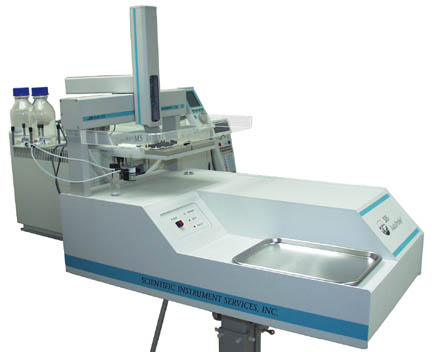
Figure 1 AutoProbeattached to the Finnigan Trace MS from ThermoQuest
This study describes the application of a new automated direct exposure MS probe (AutoProbe™), which overcomes the limitations of manual probe techniques.> The AutoProbe can perform an entire MS sample analysis reproducibly, quantitatively, and unattended in under 3.0 minutes. In a typical sample analysis, the AutoProbe precisely places the sample on the direct expose probe (DEP) wire, reproducibly introduces the sample into the mass spectrometer, and reproducibly heats the wire according to a current program so that the sample may be analyzed by the MS. Variability in sample handling and analysis are greatly minimized, resulting in reproducible and quantitative analysis of samples with both EI scanning and SIM mass spectrometer techniques.
The AutoProbe™ System from Scientific Instrument Services (SIS), Inc. is attached to the Finnigan Trace MS system from ThermoQuest. The AutoProbe System is designed to inject samples directly into the MS source. The AutoProbe™ system consists of a CTC Autosampler attached to an auto injecting direct exposure probe (DEP) as shown below (Figure 2). >(The GC in Figure # 1 is not used in this configuration.) The Trace MS is controlled and operated by the ThermoQuest Xcalibur software. The Trace MS system is a quadrupole MS system fitted with a dual EI/CI source. The MS has a mass range of 1000 daltons. For these studies the MS was operated in the EI state under both the mass scan and the SIM (single ion monitoring) modes.>
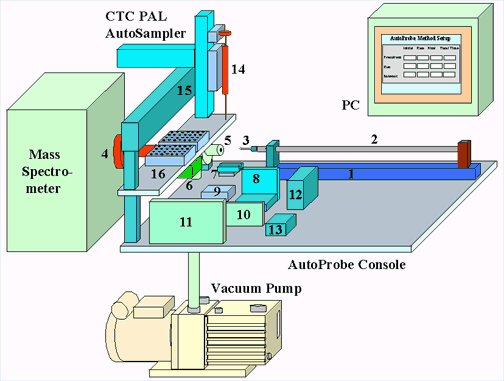
Figure 2 - Components of the AutoProbe System
AutoProbe System Components
- Linear Thrust column
- Probe Rod
- DEP Probe Tip
- MS Probe Interface
- Isolation Valve Assembly
- Electronic Vacuum Gauge Pressure Sensor
- Isolation Valve Relay Switches
- Filament Current Controller
- Relay
- CTC Power Supply
- AutoProbe Microprocessor Controller
- Servo Controller for Linear Thrust Column
- Electronic Manifold
- Autosampler Syringe
- CTC PAL column
The Direct Exposure Probe (DEP) tip uses a platinum wire coil for the analysis of samples. Samples for analysis are dissolved in a suitable solvent and placed into the Autosampler tray by the user. The Autosampler then injects 0.125 to 1.0 ul of the prepared sample solution onto a small platinum wire loop on the tip of the probe.
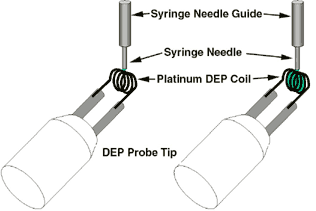
Figure 3 - Loading sample onto the DEP Filament Wire
The AutoProbe is designed to interoperate with the ThermoQuest Xcalibur MS Software and the Finnigan Trace MS.> The AutoProbe is fully integrated with the Xcalibur software operation, including system configuration, methods setup, sequences, sample runs, and data storage, resulting in a seamless probe-mass spectrometer operation package.> In addition the technique has proven to be easily used in an Open Access environment.
The standard sequence of operation of the AutoProbe System is as follows.
- The AutoProbe sample analysis parameters are entered into the AutoProbe method screen in the Xcalibur software. The Trace MS and CTC Autosampler parameters are also entered into the appropriate method screen. The method is saved under a given name.
- The sample information for each of the samples is entered into the sequence setup screen in the Xcalibur software, and the sample analysis method is started.
- The AutoProbe probe tip moves into the sample load position, with the DEP filament wire directly under the syringe injector position.
- The CTC Autosampler injects 0.125 ul of the sample in solvent onto the DEP filament wire.
- The AutoProbe tip moves into the isolation valve of the AutoProbe, the isolation valve is evacuated and the AutoProbe tip moves into the MS vacuum to within 2" of the MS source.
- The DEP probe tip is heated in vacuum at a DEP filament current of 20 mA for 15 seconds to remove the solvent from the sample.
- The AutoProbe moves in position against the MS source, the MS starts scanning and the AutoProbe temperature ramp is started to desorb the sample into the MS source. The typical filament current program involves a 900 mA ballistic heating of the DEP coil for 30 seconds.
- The MS stops scanning and collecting data once the filament ramps are complete.
- The probe moves about 1" away from the MS source and a filament bakeout is started to clean the DEP wire and prepare it for the next sample. The bakeout program is typically consists of 1000 mA for 15 seconds.
- The probe is removed from the vacuum system and readied for the next sample.
Experimental and Discussion
A series of organic compounds with molecular weights ranging from 200 to 400 amu were each dissolved in a solvent (either methanol or chloroform), and successive dilutions were made from 500 ng/ul down to less than 1.0 ng/ul . About 25 different concentrations of each of the compounds were prepared. The following is a typical set of standards prepared:> 500, 450, 400, 350, 300, 250, 200, 180, 160, 140, 120, 100, 80, 60, 40, 20, 16, 12, 8.0, 4.0, 2.0, 1.0, 0.5, 0.2, 0.1 (nanograms per microliter).> About 500 ul aliquots of each of the dilution were placed in individual 1.8 ml sample vials, which were then placed into the sampling tray on the AutoProbe's CTC Autosampler. Each sample was analyzed in triplicate for each method, and in a few cases a sample was analyzed five sequential times to determine the reproducibility of the analysis. In addition a blank methanol sample was analyzed between each different concentration.
Study 1 - Cholestane
Samples of cholestane (MW = 372 ) were prepared in chloroform to conduct a number of studies on the automated DEP technique. Several parameters such as sensitivity, reproducibility, cross contamination, memory effects, and quantitation were studied with the cholestane standards.>>
Reproducibility - To determine reproducibility of the AutoProbe technique, a sample of cholestane at a concentration of 125 ng/ul in chloroform was prepared. Then 0.5 ul of this sample (62.5 ng) was repeatedly injected and analyzed via the AutoProbe on the MS. The DEP filament was heated with 900 mA of current for 30 seconds during analysis and subsequently baked out at 1000 mA for 15 seconds in the bakeout cleaning step. This sample analysis was repeated 158 times. The mass spec was scanned over the mass range of 100 to 400 daltons and the total ion signal was collected. The sample data was analyzed by extracting the 217 ion signal of the cholestane and integrating the area of this ion.> The peak area at mass 217 for each sample of the 158 samples was plotted and is shown in the chart below.> The reproducibility of peak areas for all the samples was within 10% of each other.> This study demonstrated that the AutoProbe DEP technique is very reproducible.> This data also suggested that the automated DEP technique might be quantitative, which will be demonstrated in the subsequent studies.>
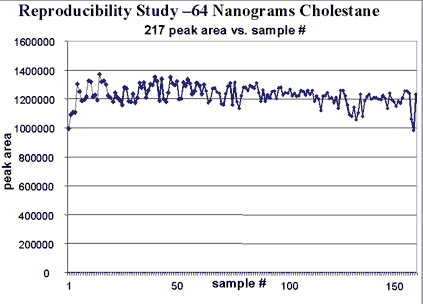
Figure 4 - Reproducibility study of Cholestane samples
Historically the direct probe techniques have not been known to be reproducible. It is quite difficult to accurately and reproducibility apply a sample to a DEP probe tip. In addition the DEP probe tip wire is often touched, the coils distorted or the coils shorted out when samples are injected onto the DEP filament wire. Changing the geometry of the DEP filament coil changes its heating patterns and therefore minimizes the chance for reproducibility.> The AutoProbe eliminates these problems.
"Memory Effects" - To test "memory effects" with the DEP technique, cholestane samples were prepared in chloroform at a concentration of 500 ng/ul. An injection of 0.5 ul of this sample (total 250 ng of cholestane) was injected onto the DEP probe tip and analyzed as described previously.> This analysis was completed five consecutive times within a 15 minute time span (3.0 minutes per sample). After each sample run, the DEP wire was baked out at 1000 mA for 15 seconds.> After the fifth cholestane sample was analyzed, 0.5 ul of methanol was injected onto the DEP probe tip and analyzed.> Both plots shown below are at the same intensity scale (Figure 5). >The cholestane sample produced a strong total ion chromatogram. The blank sample produced a flat baseline that was only observed at a scale expansion of 1000 times (three decades of expansion) the cholestane sample.
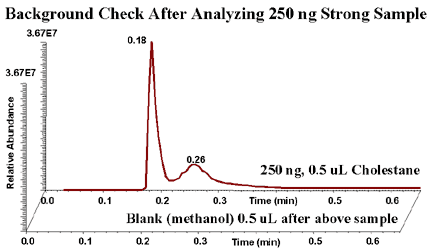
Figure 5 - Background check after running 5 consecutive strong samples.
The second chart below (Figure 6) shows the mass spec data at 0.18 minutes for the 250 ng of cholestane and the blank methanol sample from the data in the total ion chromatograms above. The scale on the blank sample is at 1000 times the scale expansion of the 250 ng of cholestane sample mass spectrum. No peaks were detected in the blank sample that could be attributed to the cholestane. >
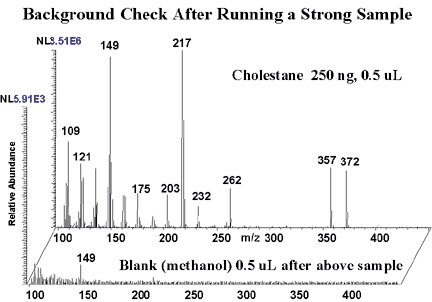
Figure 6 - Background mass spec after running 5 consecutive strong samples
The results above demonstrate that the DEP technique does not suffer from "memory effect" or "cross contamination" problems.> The high temperature cleaning step removes all traces of any of the previous samples.> It is recommended that the high temperature cleaning step be used in all analysis.> Running a blank sample between samples is optional.
Quantitation- Cholestane samples were prepared in chloroform in concentrations from 500 ng/ul down to 1.0 ng/ul as described above. The samples were analyzed with the AutoProbe as previously described.> The mass spectrometer was operated in the EI mode (70 eV), operated in the total ion scan mode and scanned from mass 100 to 400 daltons (2.9 scans/second).> Each of the prepared sample dilutions was analyzed five times to demonstrate that the automated DEP technique was quantitative and to show its reproducibility.> After each set of five samples a blank methanol sample was run.
The major EI ions for cholestane are 217, 357 and 372.> The area of the 217 ion was extracted and integrated via the MS software.> The amount of cholestane in nanograms is plotted against the area of the extracted 217 peak in cholestane. A log / log plot was used to analyze the data in order to better demonstrate the linearity of the sample analysis (Figure 7).> Duplicate analyses at the same concentration form a tight cluster, which demonstrates the reproducibility and accuracy of the DEP technique.> The quantitation plot >is linear over two orders of sensitivity (from 200 ng down to 5 ng).>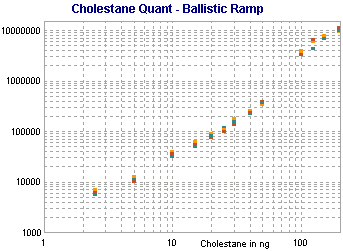
Figure 7 - Calibration Curve for the Quantitation of Cholestane
The results verified that the automated DEP technique is not only reproducible, but it is quantitative. Quantitation with a direct probe to our knowledge has not been achieved in the past. The reproducibility and quantitation demonstrated by the AutoProbe technique are due to the automation of the AutoProbe system with the exact same conditions being applied to each sample and to the unchanging geometry of the DEP filament. Since the filament coil is never touched or moved, the sample is injected onto the DEP filament coil in exactly the same position of the> DEP coil for every sample.> This provides for many new applications of the DEP technique to enable the fast quantitation of analytes.
Slow Ramp Study A series of additional studies were conducted by heating the DEP filament with a programmed ramp from 0 to 900 mA at various ramp rates of 50, 100, and 250 mA per second to study the effect of a slower temperature ramps on the total ion chromatogram peak shape and sensitivity.> The resulting data was still linear, but the slower ramp rates produced lower total ion peak heights and therefore reduced the sensitivity of the technique.> Also due to the lower peaks heights, increased peak splitting and increased tailing, the reproducibility of the integration of the peak data deteriorated.
The faster ballistic ramping produced total ion peaks less than one second in width. Therefore in order to get good quantitative data with at least 10 scans per peak, it may be necessary to scan the MS over a narrow mass range of less than 100 amu to achieve optimum quantitative results.Study 2 - Predisone
Another steroid compound, prednisone (MW = 358), was prepared as described above at concentrations from 500 to 1.0 ng/ul in methanol and analyzed by ballistically heating the AutoProbe tip with 900 mA of current.> The major EI ions for prednisone are 299 and 358. Two different MS methods were used for the analysis.> In the first MS method, the samples were analyzed in the total ion scan mode over the mass range from 155 to 362 daltons (4.5 scans/second). In the second MS method the MS was operated in the SIM (single ion monitoring) mode and data was collected at 299 and 358 daltons (15 points/second) with a mass variation of +/- 0.5 daltons.> Data for the 299 and 358 ions in the mass spectra of prednisone were integrated from each of the MS methods and the data is shown below (Figure 8)
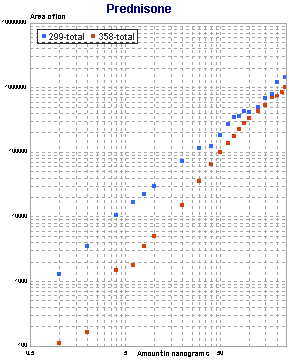
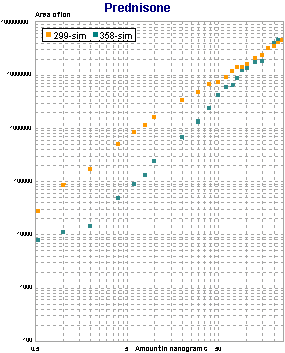
Figure 8 - Quantitation of Prednisone - Total Scan (left) and SIM mode (right)
The plots for both the total scan and SIM methods and for both the 299 and 358 ions are linear. The SIM does have the advantage of increased sensitivity as expected.> The limit of sensitivity for the total scan analysis of prednisone is about 2 nanograms, whereas the sensitivity for the SIM technique is less than 0.5 nanogram.
Study 3 Ibuprofen
Next a series of alkaloids were studied to further verify the quantitative capabilities of the AutoProbe technique.> The first of these was ibuprofen (MW = 358).> Ibuprofen dilutions from 500 to 1 ng were prepared in methanol as described previously.> The AutoProbe was heated ballistically with 900 mA of current. The major EI ions for ibuprofen are 206 and 358.> The MS was operated in the EI total scan mode (202 to 360 daltons - 5.5 scans/second) and the SIM mode (ion 206 and 358 - 15 points/second). The area of the ibuprofen major 206 ion was integrated and plotted as shown below (Figure 9).>
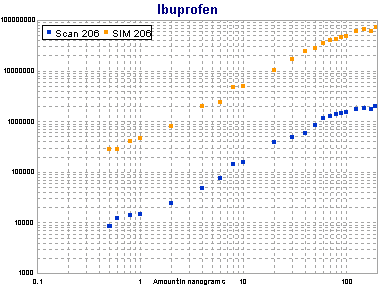
Figure 9 Quantitation of Ibuprofen - Total Ion Scan (lower plot) and SIM mode (upper plot)
The data was linear over the concentration range of 200 to 0.5 nanograms. The sensitivity of the SIM technique greater than the total ion scan method.> The SIM technique would have been detectable down to at least 0.1 nanograms had these lower concentrations of samples been prepared.
Study 4 - Diazepam
The second alkaloid studied was diazepam. Diazepam dilutions from 500 to 0.4 nanograms were prepared in methanol.> Again, two MS methods were used for the analysis. In the total MS scan, the MS was scanned over the MS range of 171 to 311 daltons (6 scans/second), and in the SIM mode data was collected at masses 256 and 283 (15 points/second). The areas of the 256 and 283 ions were integrated and plotted as shown below (Figure 10).
As in the previous studies the plots are linear, with the SIM plots being more sensitive. The sensitivity of the technique is about 0.1 nanogram for diazepam in the SIM mode.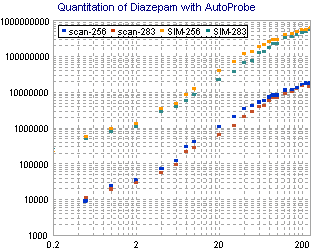
Figure 10 Quantitation of Diazepam Total Ion Scan (lower plots) and SIM mode (upper plots)
Conclusion
A number of samples have been studied via the AutoProbe DEP filament technique to determine the reproducibility of the AutoProbe system and to determine the accuracy of quantitative methods utilizing AutoProbe. Samples were analyzed from 250 nanograms down to 0.1 nanograms in both the MS total ion scan mode, as well as the MS SIM mode. The resulting plots of sample size versus total areas of an abundant ion in the MS chromatogram were linear over more than two decades of sensitivity. The results proved that the automated DEP technique is not only reproducible but also quantitative. In addition "memory effect" problems do not occur with this technique when the high temperature bakeout is used to clean the DEP filament wire after a sample analysis.
Quantitation with a direct probe has not been reported in the past.> This reproducibility and quantitation capability of the AutoProbe technique is due to the automation of the system with the exact same conditions being applied to each sample and to the unchanging geometry of the DEP filament.> Since the filament coil is never touched or moved, the sample is injected onto the DEP filament coil in exactly the same point for every sample. This opens up many new applications of the DEP technique for the fast quantitation of analytes.
The AutoProbe technique has been proven to be a quantitative MS injection technique that can reproducibly and quantitatively analyze higher molecular weight samples in about three minutes per sample.> The technique will be invaluable in the analysis of samples not only in a quality control laboratory but also in a laboratory where high volumes of samples need to be analyzed and quantitated in a short period of time.


